College reporter “Chip Martin” joked in a popular 1960s comic strip that people would someday become so married to their phone that they might actually wear it.
That day has come, journaladies and journagents, thanks to the forthcoming Apple Watch, expected to be released in early 2015. It not only tells time but also places phone calls, plays music, tracks heartbeats and does other stuff by syncing with an iPhone.
‘Twas the 9th of September and all through the Flint Center in Cupertino, California, people gathered for the unveiling. Tim Cook opened with “Apple Watch is the most personal device we’ve ever created.”
So your wrist bears the first of its kind, the first smartwatch to ever be released to the general public.
Wait, that’s not right, is it? Apple Watch is far from the first attempt at wrist-wearable technology. Failed marketing attempts, a dopey brand name and other missteps failed its predecessors, including the first major attempt long ago to marry a phone and an Internet inside a watch, yielding a small, meek, tyrannosaurus tech. So… who put it together first?
It was IBM, with the 2001 WatchPad. Look how incredibly high tech it was.

The IBM Watchpad, launched in 2001, was a flop. Image via FingerChip.com
It looks like a braceleted Tamagotchi. And perhaps the reason for its untriumphant take-off came not from the watch itself, but from the emaciated penguin controlling the software inside. We all should really stop forgetting to feed them; technology could have advanced 13 years ago if only we’d paid attention.
From 2001 to 2012, the tech industry repeatedly attempted to market wrist-wearable technology with little success — low resolution, glitchiness, bad hardware and poor design got in the way.
Between 2010 and 2012, Sony moved closer to success, creating what seemed to be a more functional watch. It was first to bring us the defective rice cooker as well, way back in 1945.
So close, Sony. NOT.
But Sony’s LiveView smartwatch wasn’t so bad. It looked snazzy and seemed highly functioning, making the wearer’s wrist look like it had an upgrade of its own. In fact, I’d like to dress that wrist up in a nice suit and take it to a fancy steak dinner.
Sadly, it never caught on.
EnGadget’s Richard Lai said of Sony’s new watch back in 2010, “you know that feeling when you were promised a pet monkey for [your] birthday, only to realize that your dad actually meant a little bottle of sea monkeys?” It just didn’t work. Its controls were confusing, and the screen resolution was poor, said Lai.
But I think this time may be different. The reason why I think the Apple Watch will catch on is not because it has fixed all of the problems (though it may have, it’s hard to tell without getting my hands on one.) No, the reason why I believe the Apple Watch will sell is because of this:
Taste the familiar fruit, users. I’m an Android user myself, so I don’t have the Apple logo branded on my skin anywhere, but for most Apple users, the logo is enough for them to say

Stephen Colbert Reaction GIF via www.reactiongifs.us
Apple said it sold more than 10 million of the iPhone 6 and 6 Plus models in the first three days they were available in stores. In three days, the company sold out for all carriers: Verizon, AT&T, Sprint. Three days? The company’s name alone has so much… sway.
But let’s get to the real reason why you opened this article in the first place. Do I think journalists should invest? Drum roll, please.
I do. And I invite you to come watch said wedding.
You’re a journalist, or maybe not. But kudos to you for reading the American Journalism Review in your free time, neuroscientist Dave. And as journalists, we’re always on the go. Hell, you probably spend more time thinking about what you’re going to write about next or who you have to talk to than what you’re going to eat in order to sustain the life of busyness you lead. And you need your phone. It’s your lifeline. It may be how you record interviews, take notes, gain instant access to the newest stories, tweet, update your team or editor or do simple tasks like call or text.
So, contrary to what some people think, the Apple Watch isn’t going to “get rid of the need for phones.” It’s just an additive, like food coloring. Not Red #40 or Yellow dye #2, but it adds something to your journalistic livelihood. Some color, if you will.
When my editor and I decided on this topic, I was skeptical. Apple Watch?
But for those who have an iPhone, it should be great for use. Apple’s website gave a substantial overview of the watch’s implications, from its digital crown to its touch-screen capabilities. The crown located on the side allows you to scroll through messages and applications, instead of panning through the screen’s menu.
As my Pappaw would say, the new watch is “pretty slick.”
Sure, parts of the Apple Watch may not be necessary for new-wave journalists, but for the most part, journalists should be able to use all of its key features to their advantage. Think of all the possibilities. All the applications. All the… coolness.
1. Recording MOS Interviews
Have you ever felt awkward holding something visibly in front of an interviewee? A better option might be this watch. Since the device syncs with your iPhone, you can use your recording app easily on the street, without having to whip out your phone from your purse or pocket. *clicks wrist watch app* “Hi there sir, I was wondering if you could comment…”
2. Incognito message receiving
Sure, it’s on your wrist, so it’s in plain sight, but just like the superhero you are, you could receive incoming texts, emails and tweets quickly and discreetly. Your phone is usually in a pocket, a bag or some place you don’t remember leaving it, but the watch sticks with you. Literally. It’s attached to you. You can receive every notification with the tilting of a neck after feeling a little rumble from the device to let you know of the incoming update, and then you decide whether you feel like texting back John from the Des Moines Register or answering that email from your photo editor. And the best part is, in conversation, no one has to know you’re actually checking your texts. You’re just “checking the time” over… and over… again. “Time changes. Just..watching it… ,” you jest.
3. Quick message response

Kim Possible responds to Wade Load’s message via Kimmunicator, the Disney Channel smartwatch. Image from Kim Possible Wiki.
If you see an email worthy of a long response, pull out your phone. Otherwise, a message can be drafted from the watch. For texts, the voice memo is helpful. Record your response to a message, like a seven-second “I’m on my way. Order Chinese” voice text to your co-worker. The day has come when you can talk to people by raising your hand to your mouth. It will make you feel like you’re on a secret mission. And let’s be honest. You always are. This watch just wants to be your Robin. Or Wade Load, if you’re a Kim Possible fan like I am.
4. News Apps

MSNBC’s “Breaking News” took flight on Twitter and then became an Average Consumer “app of the week” in May of 2012 via http://theaverageconsumer.com/
Not only will you have instant access to texts and calls, you will also be able to download your favorite news applications onto the device. The Android CNN app I use sends CNN instant updates straight to my phone. With the apps on your wrist, convenience increases. When news breaks, you need to know about it. Like a stranger tapping your shoulder, the watch taps your wrist to say “Did you know this is happening?” Then you can pull out your phone and read more. As for news aggregating applications, developers are creating Apple Watch-friendly apps alongside the ones that already exist, so by the time Apple releases the watch in 2015, an entirely modern news aggregating application may be available.
So if you have an iPhone, it may be totally worth the investment, that is, if you have the money laying around (prices will start at $349.) But let’s be honest. You’re a journalist. So. You can dream.



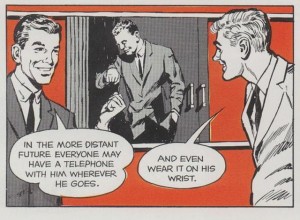
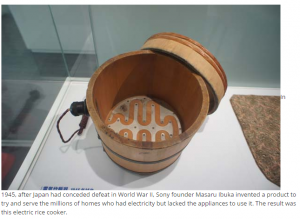
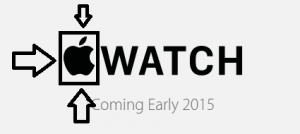
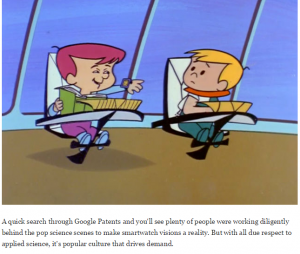
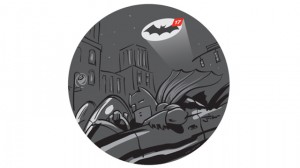


Leave a Comment